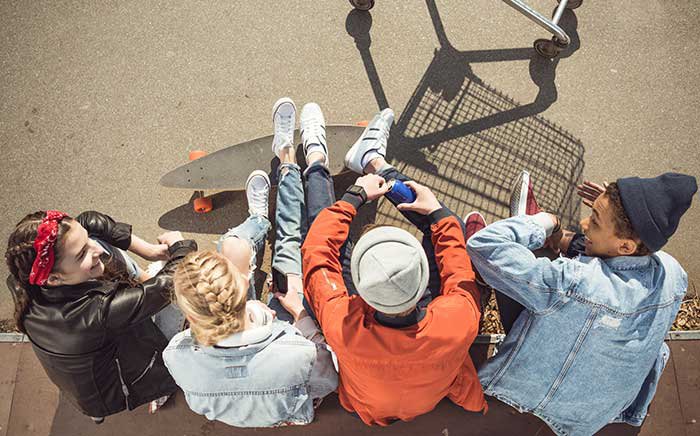Young people and the law
Giving alcohol to young people
The Australian drinking guidelines recommend not supplying or introducing any alcohol until after 18 years of age.7

This is because it can increase the likelihood of a young person:
- drinking earlier
- drinking more frequently
- drinking larger quantities.1
While it’s not recommended, in most states and territories it is legal to supply people under 18 with alcohol if you’re their legal guardian. But the law varies by state and territory – check out this page about secondary supply laws for more information.
Underage drinking
It’s illegal for staff of licensed premises to serve alcohol to minors in Australia.
In most states and territories, it’s also illegal to give alcohol to anyone under the age of 18 on private property, even in homes, without permission from the young person’s parent or legal guardian.
Anyone who supplies alcohol (both adults and minors), to someone who is under 18 years of age can be charged and fined. Find out about the laws that apply in your state or territory.
Drink spiking
Drink spiking is illegal in Australia and there are serious penalties, including fines and imprisonment.
Drink spiking is often associated with a drug being added to someone’s drink. However, it’s more common for a friend or acquaintance to add alcohol – or more alcohol than expected – to someone’s drink.
There can be serious physical and mental consequences of causing someone to drink more alcohol than they’re aware of.
Talk to your young person about drink spiking and arm them with some sensible safety tips:
- always keep their drink with them
- buy or pour their own drinks
- throw out the drink if it tastes strange or different
- don’t share drinks with others.
If they are ever in a situation where they think their drink has been spiked, they should:
- ask someone they trust to help get them to a safe place
- inform an adult at the party or management at a venue, so they can assist in finding the person responsible for drink spiking
- if they feel unwell or have been sexually assaulted, go to the nearest hospital, call triple zero (000) or go the nearest police station.
Other drugs
Other drugs sometimes used by young people, like cannabis, are illegal in most states and territories.
If your young person is caught by police with illicit drugs, they might receive a caution, be questioned, or possibly arrested. Drug laws vary between states and territories. Young people under 18 can be punished as an adult for some drug offences.2
From late October 2023, the possession of small amounts of certain illicit drugs will be decriminalised in the ACT. This means if a young person has small amounts of drugs on them, they won’t receive a criminal charge. Instead they might receive a caution, fine or be referred to a diversion program.3 This only applies to the ACT, not other states and territories.
To find out more about laws for your state or territory, visit Youth Law Australia’s page and select your location from the drop-down menu.
- Yap MBH, Cheong TWK, Zaravinos-Tsakos F, Lubman DI, Jorm AF.Modifiable parenting factors associated with adolescent alcohol misuse: a systematic review and meta-analysis of longitudinal studies. Addiction (Abingdon,
- Australian Government Department of Health and Aged Care. Drugs and young people 2019 [25.11.2022].
- ACT Government. Nation leading drug reform for the ACT 2022 [25.11.2022].